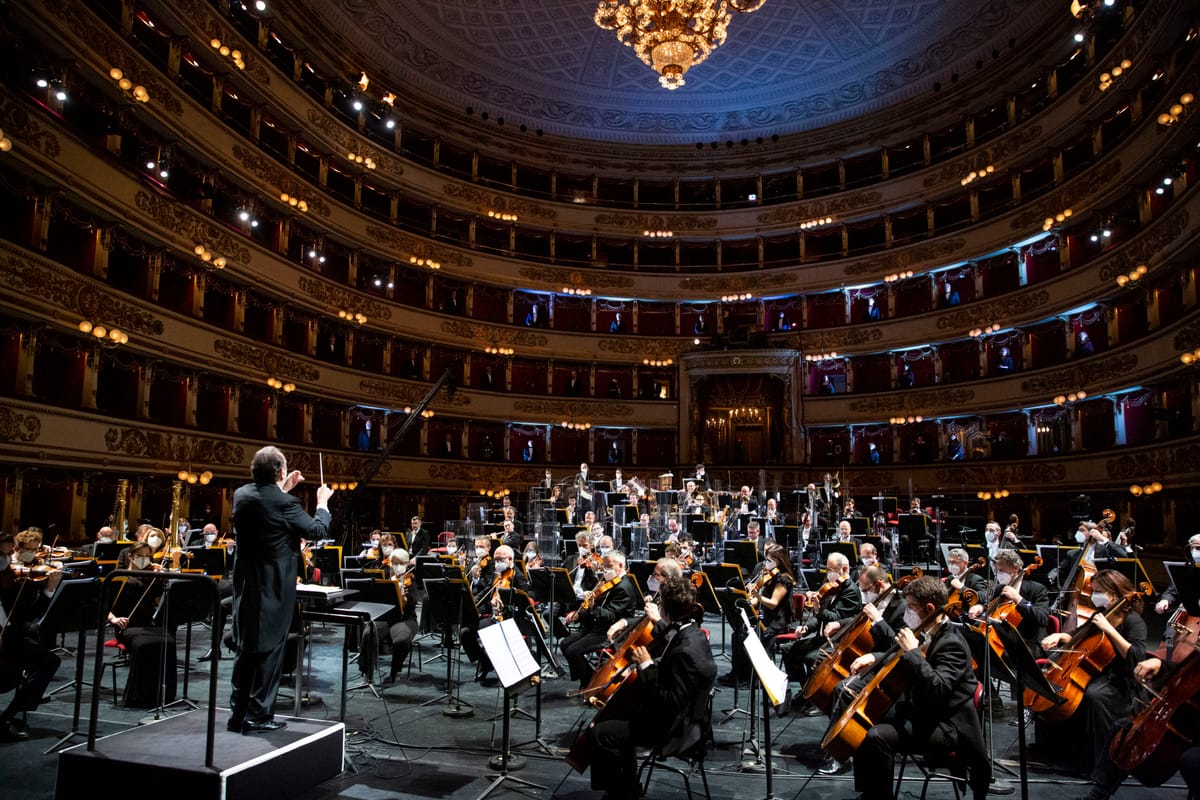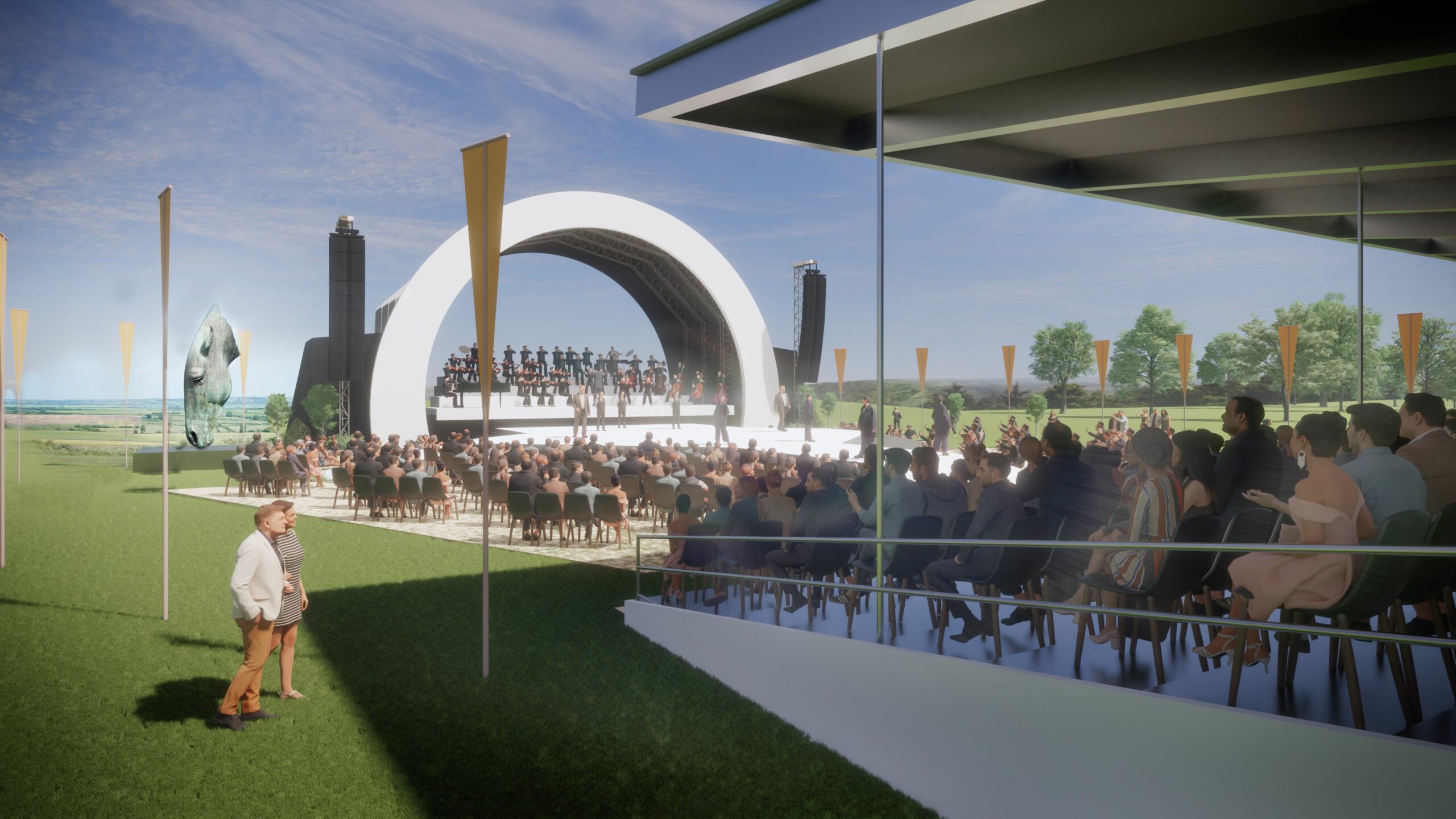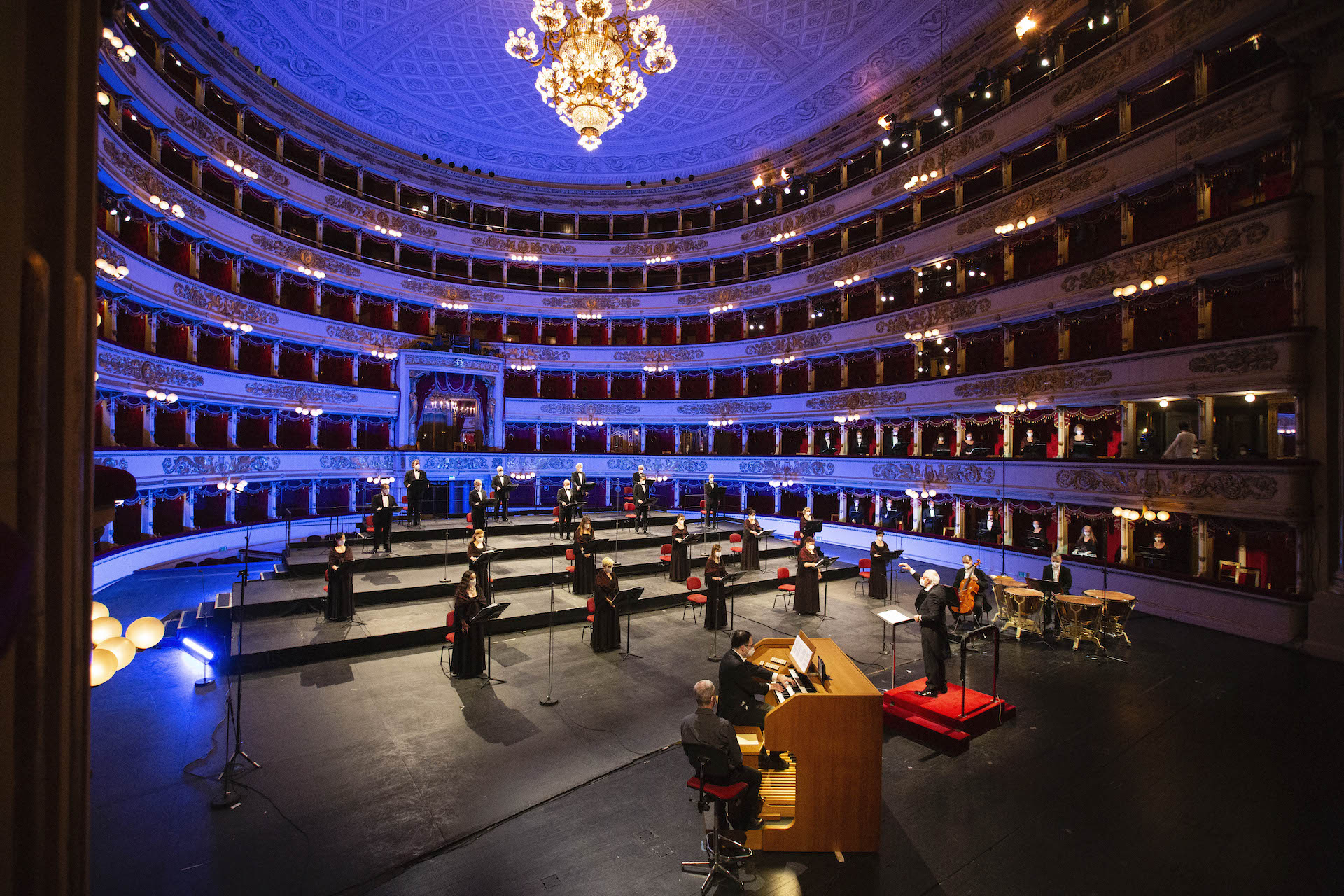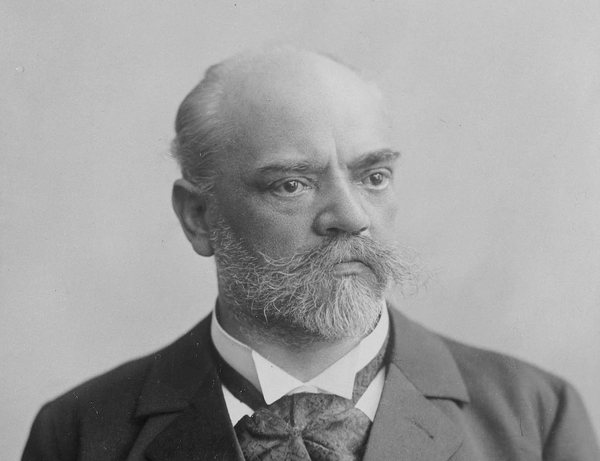State of the Arts

With inputs from Gian Ganzarolli, Consultant to the NCPA for opera, who gives us a sweeping overview of what has been happening across venues in Europe during the pandemic, we bring you the latest from centres of culture the world over that are thinking outside the box to make live performances safe for the audience.
It has been a year and a half since the performing arts sector around the world has been deeply suffering the effects of the Covid-19 pandemic. Theatres have been closed while lavoratori dello spettacolo are struggling to get to the end of the month in the absence of subsistence from the government.
Finally, theatres across Europe are now reopening or planning to reopen, following specific government regulations. Some theatres, such as The Grange Festival in the U.K. with its resident Bournemouth Symphony Orchestra (BSO), are reinventing themselves when, due to logistical limitations, they cannot meet the governments’ requirements. To meet the social distancing protocol, Michael Chance—the festival’s artistic director—considered three options: repositioning the orchestra to a separate building; reducing the number of players to a basic socially distanced quorum; and lastly, using pioneering technology to play the full orchestral score digitally live with the singers on stage.
Eventually, Chance chose the last option. Therefore, the BSO will be live streaming, with the performance presented in multiple digital formats, even though the orchestra will not actually be present in the theatre.
Stages of change
The 13th-century Nevill Holt Hall in Leicestershire, home of the three-week long, annual Nevill Holt Opera (NHO) festival, had just completed an extensive round of renovations when the pandemic hit. The result was that the 2020 edition of the festival did not happen at all. This year, the organisers of the NHO have put in place an ambitious plan for the 2021 edition—to build an outdoor stage and seating that will enable an audience of up to 650 socially distanced people to enjoy a performance. The new stage will resemble a catwalk while audience members will have the option to spread out on picnic blankets on the lawn or choose premium seats under a covered grandstand.

Iford Arts, an independent opera company and not-for-profit charity, based in Bradford on Avon near Bath, has been known for its elegant opera productions usually presented in the intimate setting of the Iford Manor. In 2019, the festival moved to Belcombe Court, a Grade I listed historic house, also near Bath. The festival was cancelled in 2020 and for its 2021 edition, the organisers had to modify the setting to observe government guidelines and safety protocol. “We’re using a ‘Saddlespan’ marquee in the grounds of Belcombe Court. It is open on three sides, so allows good airflow and more room for socially distanced seating. Our programme this year is a reduced one but with the marquee, we are able to have a larger than usual audience,” says Julie Butterworth, Marketing Manager at Iford Arts. The company’s Executive Director Michael Volpe has been recently awarded an OBE for services to opera.
In addition to the grounds being the venue for a much-anticipated double bill of Cavalleria rusticana and Pagliacci this August, they will also make good use of the balmy summer evenings and host Picnic Prom with Classico Latino, an award-winning ensemble that blends the techniques and sounds of classical music with authentic Latin American rhythms and melodies.
The Royal Scottish National Orchestra (RSNO) has taken to the road this summer with a series of pop-up concerts marking its return to live public performances with events for Scotland’s communities. Ensembles of RSNO players have been touring to destinations across Scotland, visiting primary schools, community centres, hospitals, care-homes and public spaces. Last month, a mixed ensemble of players performed in the sprawling gardens of Culzean Castle in Ayrshire, and a brass quintet visited the Newhailes House and Gardens in Musselburgh. Both performances were free to attend by members of the public visiting the properties, taking place at 12 noon and 2 pm in a socially distanced, outdoor setting, and lasting approximately 40 minutes.
Australia has been hugely successful in containing Covid-19 cases, leading to the reopening of several venues, some of them to full capacity. Handa Opera on Sydney Harbour, a pop-up open-air opera house concept, is known for its spectacular views, and now, the potential for staging operas in a well-ventilated, socially distanced set-up. In March-April, Opera Australia presented its production of La traviata on a purpose-built temporary stage installed over water. Fireworks lit up the sky at every performance and a giant chandelier shimmered over the harbour stage. The biggest scenes featured 70 performers on stage and party boats in the harbour.
In Italy, Teatro alla Scala has been afflicted with untimely happenings. It had to cancel the inauguration of its 2020-21 season with Lucia di Lammermoor in December 2020, due to an outbreak of Covid-19 in the choir. Then, a few days before the presentation of L’Italiana in Algeri scheduled on 25th May, a cast member tested positive for the virus and the performance was thus suspended.
This version of L’Italiana in Algeri was intended for concertgoers under 30—who were to be seated only in boxes and on the tiers—as well as for streaming through the theatre channels and live broadcasting on Radio 3. Had this gone ahead, it would have marked the return of the public to the theatre for an opera for the first time since last autumn, when La traviata and Aida were staged in an in-person concert. At the time of this going to press, the first opera in which the orchestra was set to return to the pit was last month, with the presentation of Le Nozze di Figaro staged by Giorgio Strehler and directed by Daniel Harding. In September, the theatre will present the postponed L’Italiana in Algeri and in October, Il Barbiere di Siviglia with Music Director Riccardo Chailly.

Opera lovers can look forward to Season 2021-2022 at La Scala, which will open as usual on 7th December with Macbeth under the baton of Chailly, supported by a cast that will include Anna Netrebko, Luca Salsi, Ildar Abdrazakov and Francesco Meli, in other words, the best in the business. In January, Evelino Pidò will conduct I Capuleti e i Montecchi with Marianne Crebassa, Lisette Oropesa and René Barbera with Michele Pertusi. In February, Lorenzo Viotti will conduct Thaïs before Valery Gergiev comes for Pique Dame.
As of today, apart from guidelines on regular sanitisation, temperature checks, staggered entry and social distancing for the audience, Italian theatres must adhere to the following rules:
– Musicians playing wind instruments must maintain an interpersonal distance of at least 1.5 metres; for the conductor, the minimum distance from the first row of the orchestra must be 2 metres.
– For brass instruments, each station must be equipped with a condensate collection tray, containing disinfectant liquid.
– The members of the choir must maintain a lateral interpersonal distance of at least 1 metre and at least 2 metres between any rows of the choir and from other musicians present on the stage.
– The use of changing rooms should be avoided and the arrival of orchestral players in the theatre in concert dress should be favoured.
Governing to protect
The only positive aspect that this pandemic has had in Italy is that the government has realised how fragile and unprotected the operators in the arts are and it is now updating laws to help them. This was not a natural process. In fact, when the Italian Minister of Culture announced the reopening of the world of entertainment, it led to the occupation of the Piccolo Teatro in Milan together with the Teatro Verdi in Padua and Teatro Mercadante in Naples, with protests held in Venice, Rome, Turin, Rimini, and throughout the rest of Italy.
Finally, in May 2021, the Italian government announced a new welfare system which will guarantee a package of support measures to ensure adequate social security for entertainment workers such as: adjustment and extension of protection and support for parenting, adjustment and extension of sickness allowance, increase in the daily wage recognised for welfare purposes, insurance against accidents at work and occupational diseases, an unemployment insurance for self-employed entertainment workers with an allowance which will be paid monthly, and an improvement of the pension contribution system.
Something similar also happened in France where the Odéon, one of France’s six national theatres, became the scene of a new protest. In addition to the Odéon, there were many other structures being occupied by the dramatic arts students of the L’Ecole du Nord, Strasbourg and Besançon. Some of the protesters slept inside the facilities, with daily assemblies to discuss the protest, which eventually went beyond just the world of culture, becoming a criticism of the French management of the pandemic.
The situation unfolded differently in Spain where the responsibility for managing the virus was decentralised to the regions. The Comunidad de Madrid was the only one of the 17 autonomous communities of Spain that chose to keep everything open. In January, the third COVID-19 wave imposed the early closure of the area at 9 pm, but since February, the curfew has been imposed at 11 pm. In the name of freedom, all commercial activities were open, and so were cultural places such as theatres, cinemas and museums. The reasons for such a different approach are mostly political, and, of course, economical. The freedom to have an aperitif in company is not only a source of tourist promotion, but above all, a propaganda tool in view of the new government elections.
Across the Atlantic, the Metropolitan Opera in New York is preparing to open its 2021-22 season on 27th September but not without its share of protests. With unions representing its various employees, including stagehands, opposing pay cuts, negotiations with these bodies are proving to be as big a hurdle as ensuring audience safety in its 3,800-seater theatre. With Broadway theatres reopening to full capacity in September, opera-loving audiences are eagerly waiting for the Met to follow suit. The largest Broadway space, however, has half as many seats as the Met.
Nevertheless, a full slate of performances has been announced for 2021–22, including three contemporary Met premieres—the most since 1928—starting with the Opening Night presentation of Terence Blanchard’s Fire Shut Up in My Bones, conducted by Yannick Nézet-Séguin. Considerable thought to inclusion and diversity in programming has been given during the lockdown. Blanchard’s opera is the first by an African American composer to be performed at the Met.
The Met’s General Manager Peter Gelb explains several other plans meant to be responsive to a cautious audience, including a large number of earlier 7 pm curtain times, as well as reduced running times. “We will be presenting Boris Godunov in its original two-and-a-quarter-hour version without intermission, making cuts in the Baroque opera Rodelinda, and removing the intermission between Acts II and III in Madama Butterfly. We’ll also be presenting a 90-minute English-language version of Cinderella, an adaptation of Massenet’s Cendrillon, as a holiday entertainment for families,” he says.
Last month, the Carnegie Hall announced programming for its 2021–2022 season, sharing plans to reopen its landmark concert venue to the general public in October 2021. The season highlights include the Perspectives series curated by Oscar Award-winning composer and musician Jon Batiste, and internationally renowned violinist Leonidas Kavakos; the appointment of MacArthur Fellow and Pulitzer Prize-winning composer Julia Wolfe to hold the Richard and Barbara Debs Composer’s Chair; and the venue’s next citywide festival, Afrofuturism, which explores a thriving aesthetic movement that looks to the future through a Black cultural lens, intersecting music, visual art, literature, politics, science fiction and technology.
The Carnegie Hall also presented its first live performances since the lockdown in March 2020 by kicking off the summer 2021 season of Carnegie Hall Citywide, the hall’s free concert series that brings live music to all five boroughs of New York City, on 12th June. The schedule includes more than 20 performances in 11 partner venues, including the Madison Square Park and Historic Richmond Town, from June through September, showcasing renowned local artistes performing a variety of musical genres—classical, jazz, folk, Latin music, and more—helping to reignite the arts and culture sector in neighbourhoods across the city.
“While we continue to work towards Carnegie Hall’s reopening this October, we’re thrilled to be presenting extraordinary live music performances across New York City this summer,” says Clive Gillinson, Executive and Artistic Director. “As part of our ongoing commitment to our great city, we feel it’s incredibly important to do all we can to bring live music back and we are enormously appreciative of our outstanding community partners for collaborating with us to make that possible.” All performances have been organised outdoors with safety protocols in place for artistes, audiences and staff.
Digital augmentation
At a session called Digital Unpacked organised by the AAPPAC (Association of Asia Pacific Performing Arts Centres) in May 2021, which was attended by NCPA Chairman Mr Khushroo N. Suntook and the senior management, the heads of member/participating organisations concurred that making performances available digitally does not compromise the live experience but only augments the offering.
Katherine Connor, Executive Director, Performing Arts Connections Australia, and one of the panellists, observed, “The digital [medium] provides a low-risk entry point to live performances for people who may have not been inclined to going to theatres and these viewers are converting to in-person attendees. Those engaged in live streaming or creating work for the digital platform are removing the real and perceptual barriers to access live performance. They are developing new audiences and expanding the tastes of existing audiences.”
She gave an example of a unique initiative called the Melbourne Digital Concert Hall (MDCH), created by and for musicians within two weeks of the lockdown in March 2020, to connect Australian artistes and communities everywhere through music and technology. The platform works on touring not a show, but infrastructure, which means a venue or a group of artistes can work with MDCH to bring in all the gear and crew to live stream their performances. The concept is straightforward. A concertgoer purchases a ticket to enjoy a high-quality live-streamed performance; MDCH passes on the full ticket price to the artistes, with a modest booking fee keeping the cameras rolling. The platform has a provision to also invite a small studio audience, and has presented over 230 performances so far.
The National Theatre and Concert Hall in Taipei, Taiwan, has been working on its Future Theatre Project to reimagine the theatre experience with digital transformation. Programming Director Lin Ting-Chun elaborated on the project that includes a private 5G network within the organisation to facilitate visual transmission of performances through the installation of 5G-enabled 4k cameras in two of their theatres. AR (augmented reality) glasses for the audience to access multi-language subtitles among other services are being put in place. Ting-Chun also pointed out the need to explore the idea of tailoring digital content for the online audience by treating it as a separate entity.
Benefactors’ role
Last month, I was in a webinar organised by the Opera Europa which was supposed to be live in Bergamo, Italy, but for obvious reasons, was only digital. Many theatres worldwide were present at this meeting and some of them shared their experiences and their actions in order to keep the music alive and to engage with their public.
Most of them did what the National Theatre in London did, i.e. rely on a back catalogue of high-quality recordings to make available to as wide an audience in the fastest way that they could. The National Theatre at Home streaming service, which started in April 2020, made many productions, including One Man, Two Guvnors and Jane Eyre, among others, available on YouTube for free for audiences around the world to watch from their homes. The online streaming was supposed to last for about four weeks, but it turned out to be much longer than expected during subsequent lockdowns. Finally, a total of 16 productions were made available to the public and the whole programme ran for 16 weeks. Through this initiative, the National Theatre was able to keep engaging with its audiences, and they reached a total global audience of 15 million people that watched those recordings.
What was common to all theatres that shared their stories was that everyone asked for more help from their benefactors and many received a large amount of help from them. They were all engaging their benefactors through these webinars, and because the approach was much less formal, everybody was more at ease to speak frankly with each other.
We all know that the arts need benefactors. We need to find them and not be shy to ask them for help. Governments can find ways to incentivise these donations to encourage benefactors to do their bit to save the arts. After all, a nation is defined by its performing arts and to protect the fragile system, it needs practical solutions.
REOPENING THE NCPA
Chairman Mr. Khushroo N. Suntook reflects on these international developments and drawing inspiration from them in the Indian context
A decision which can go horribly wrong either way is to decide when to start in the middle of the Covid-19 pandemic. We can either go with the crowd in Europe and start slowly bringing in people commensurate with the infectious position in the community. For example, the recent French Open Tennis Finals was almost filled to capacity. There is no doubt that opinions are clear that there is nothing to replace live performances but I believe, in India, until sufficient confidence is built up, it may be too dangerous to go too fast.
The speed of the progress is what concerns us. Also, work which is currently underway to take care of modern requirements in our theatres, may not be required in future when things return to normalcy. These are some of the problems we face and which have to be tackled. Obviously, the cost of tickets will go up since very few can be sold in comparison with the olden ways and loved ones cannot sit next to each other except at designated distances. I believe that one day we will ask ourselves what the best decision was.
Members would be pleased to know that during the lockdown our genres and the Management team were busy thinking of new ways to expand and to examine new areas of opportunity. We are surely doing this on a large scale and will come to you for advice at the right time but be sure that the present Tatas proposition will not be disturbed.
We apologise to our members for the comparative inactivity but I assure you that each one of us is looking to the day when we can come back. In the meanwhile, we are examining ways and means of staging our performances, drawing inspiration not only from our own genres but taking advantage of the wonderful innovations being used in Europe and elsewhere. In spite of the inclement weather in Europe, there are still plenty of open-air spaces being used and we need to wonder how they can afford it.
I am sure members are aware of our ambitious plan to expand our premises subject to receiving the numerous permissions from various authorities. This is an exciting new development and can change the face of Mumbai on the cultural front. The renovation of the restaurant, the erstwhile Amadeus, also needs attention and there are some ideas on how to make it into an aspirational space with exclusive memberships and fine listening areas, both for debates, conversations and esoteric listening of unusual music.
Incidentally, I am happy to inform you, though sad for me, that my dear friend Vivian Liff who passed away recently has left us a huge legacy of more than 12,000 CDs and some few hundreds very valuable books, which will make our collection one of the most extensive in the world as far as opera is concerned. We now have to take advantage of this position.
This piece was originally published by the National Centre for the Performing Arts, Mumbai, in the July 2021 issue of ON Stage – their monthly arts magazine.





